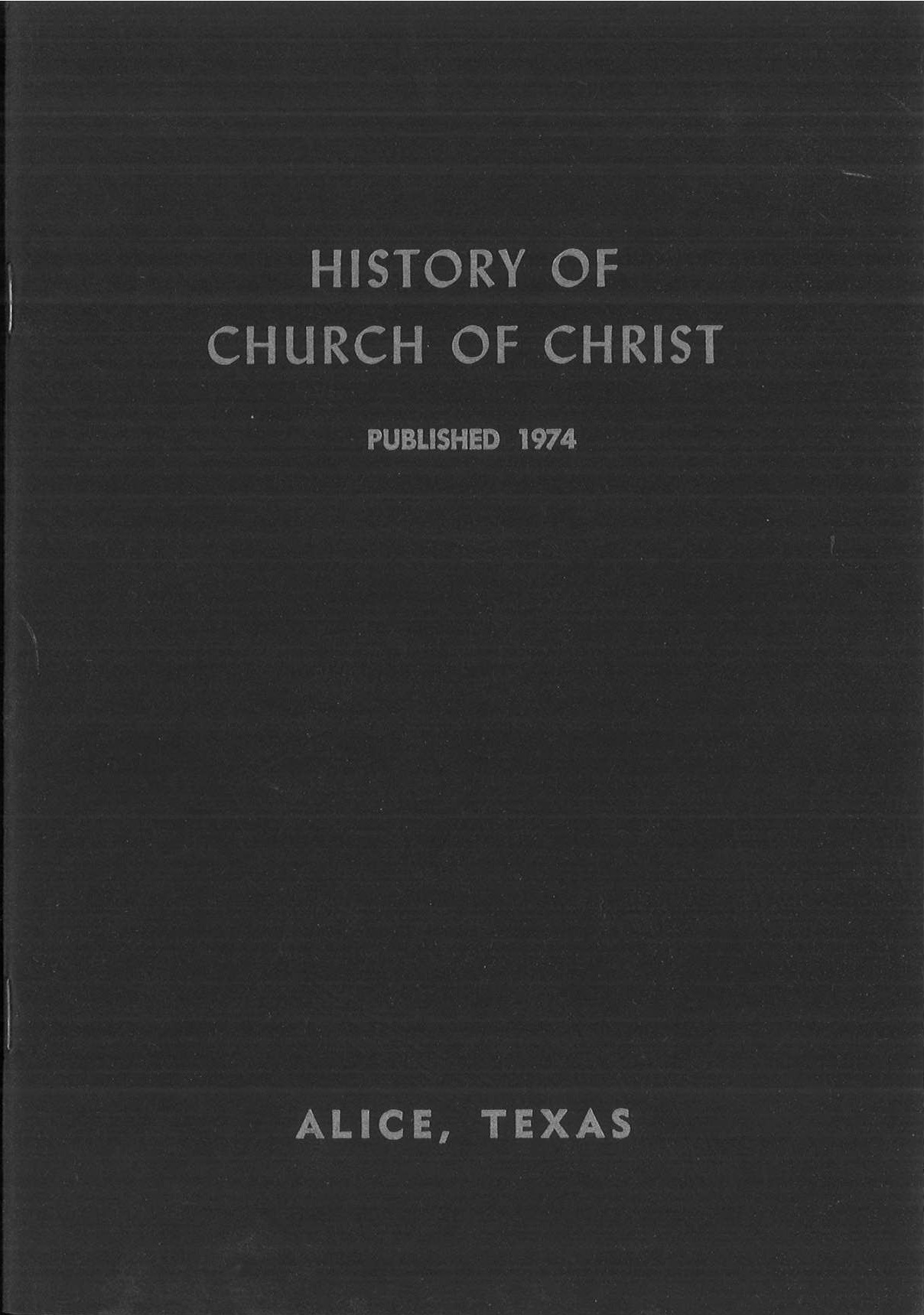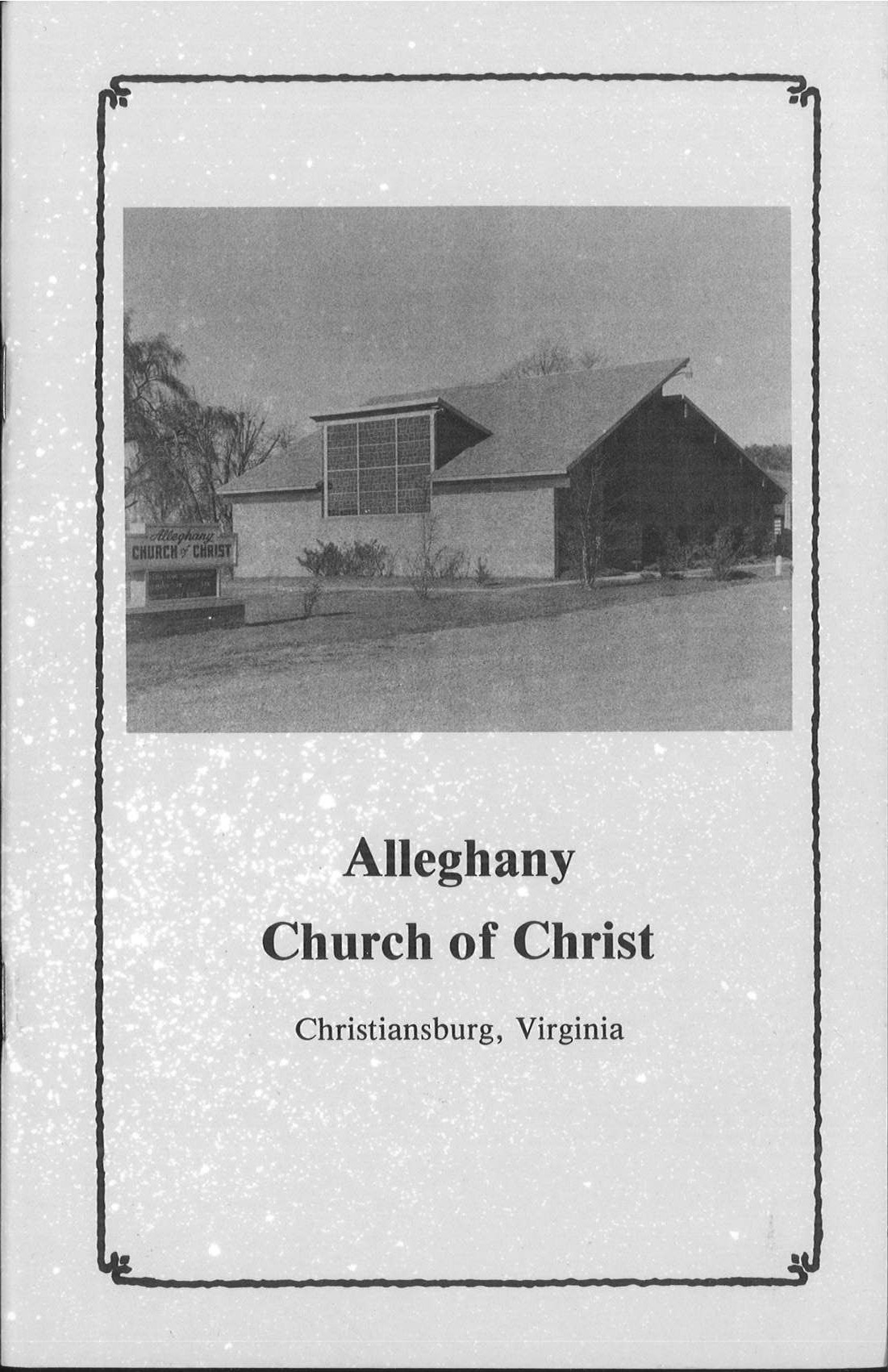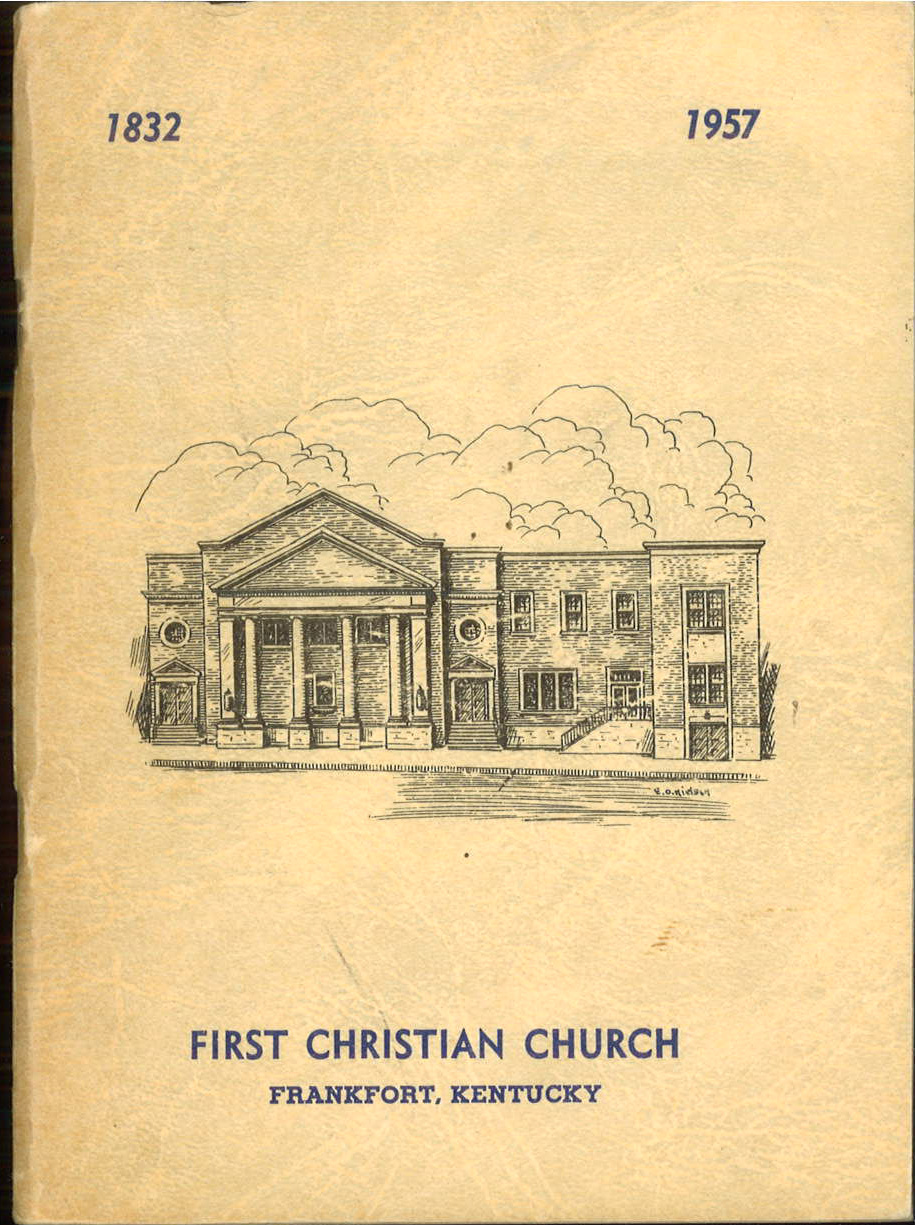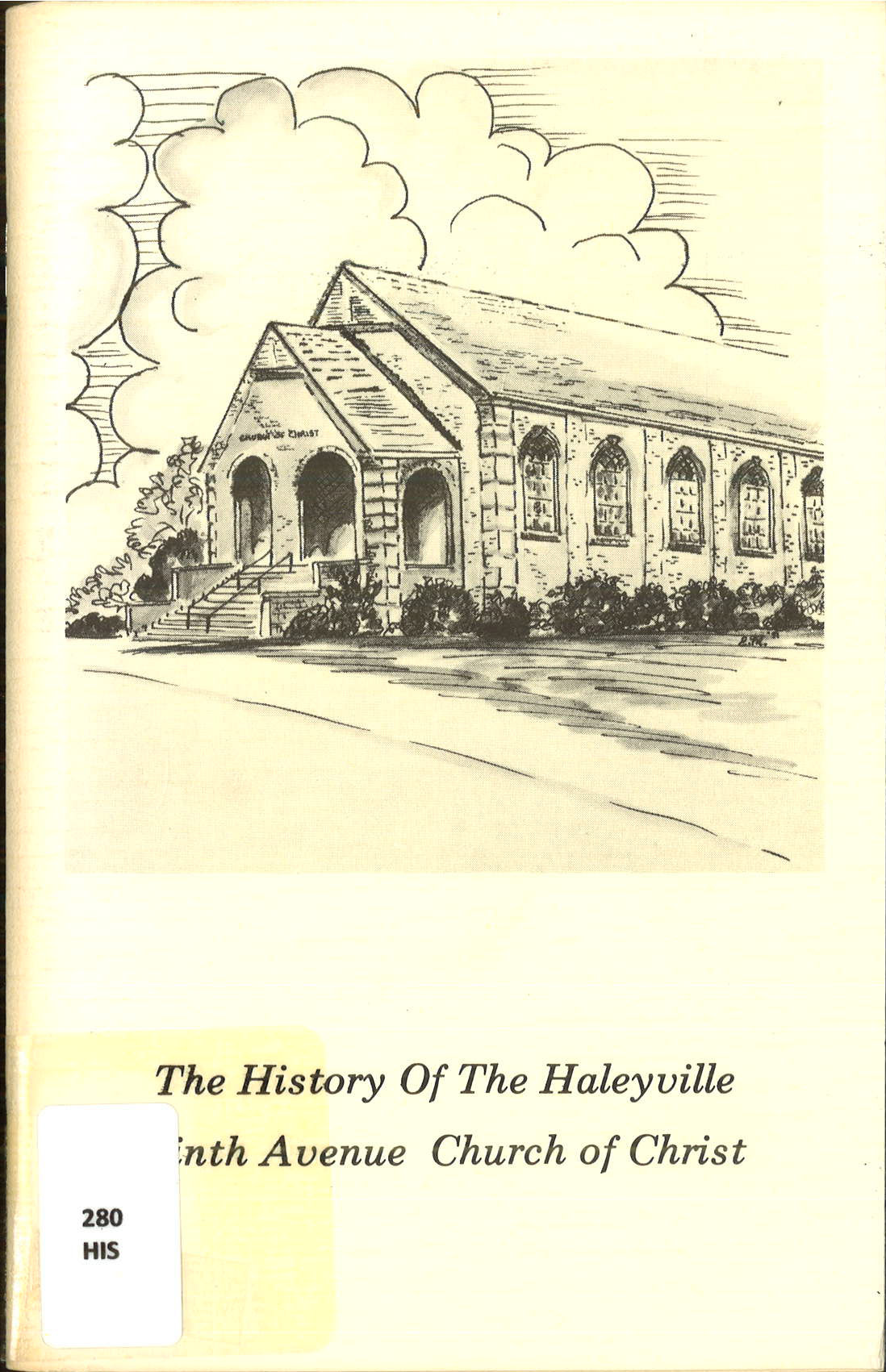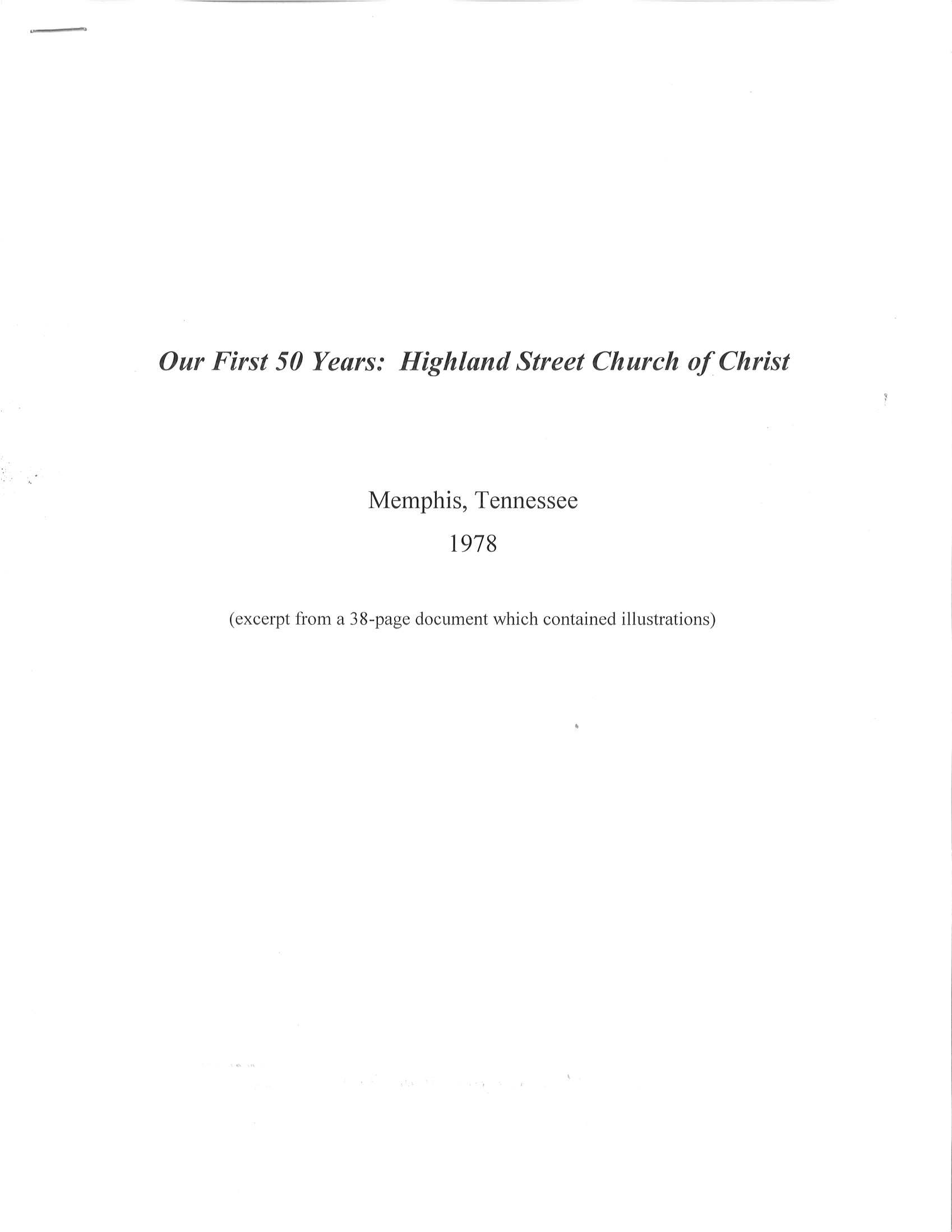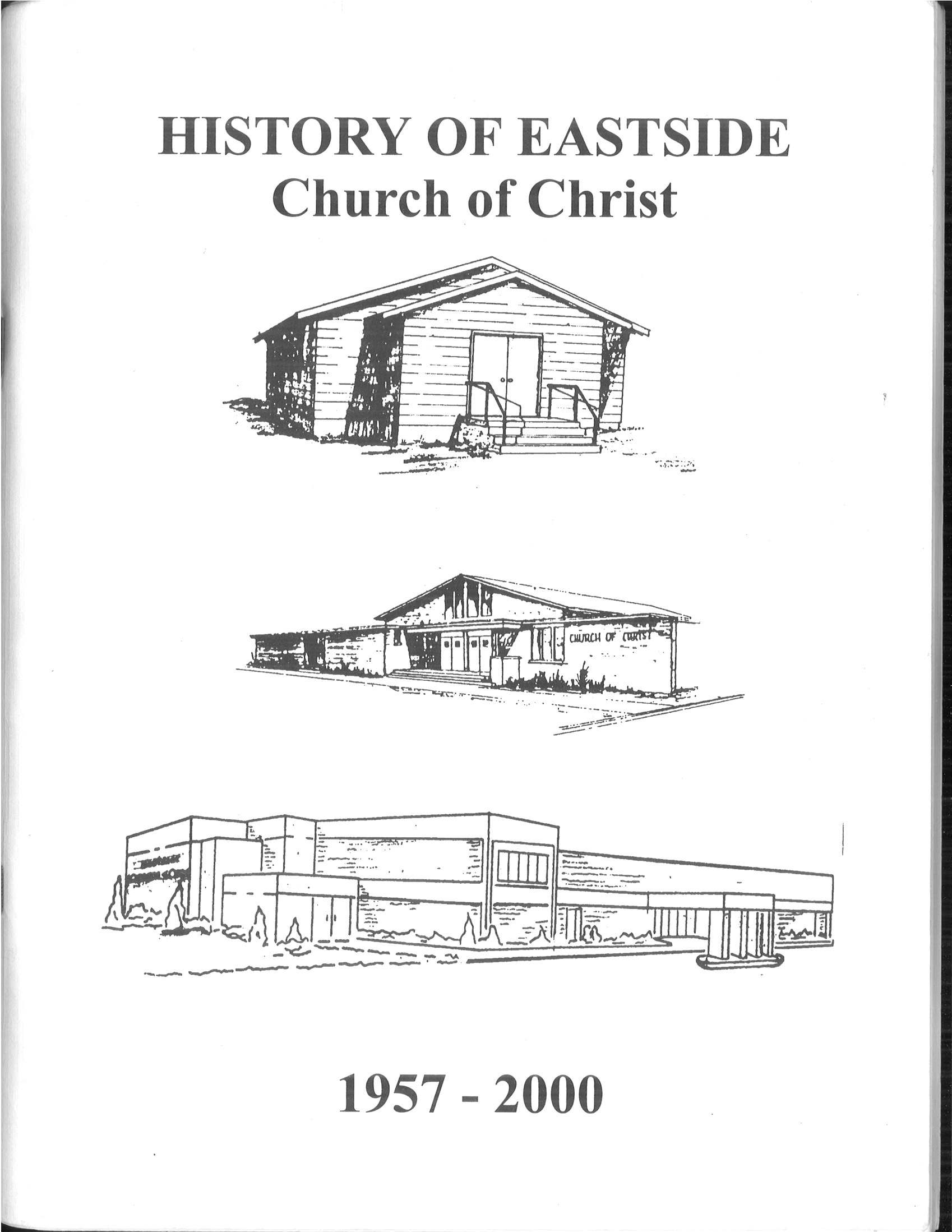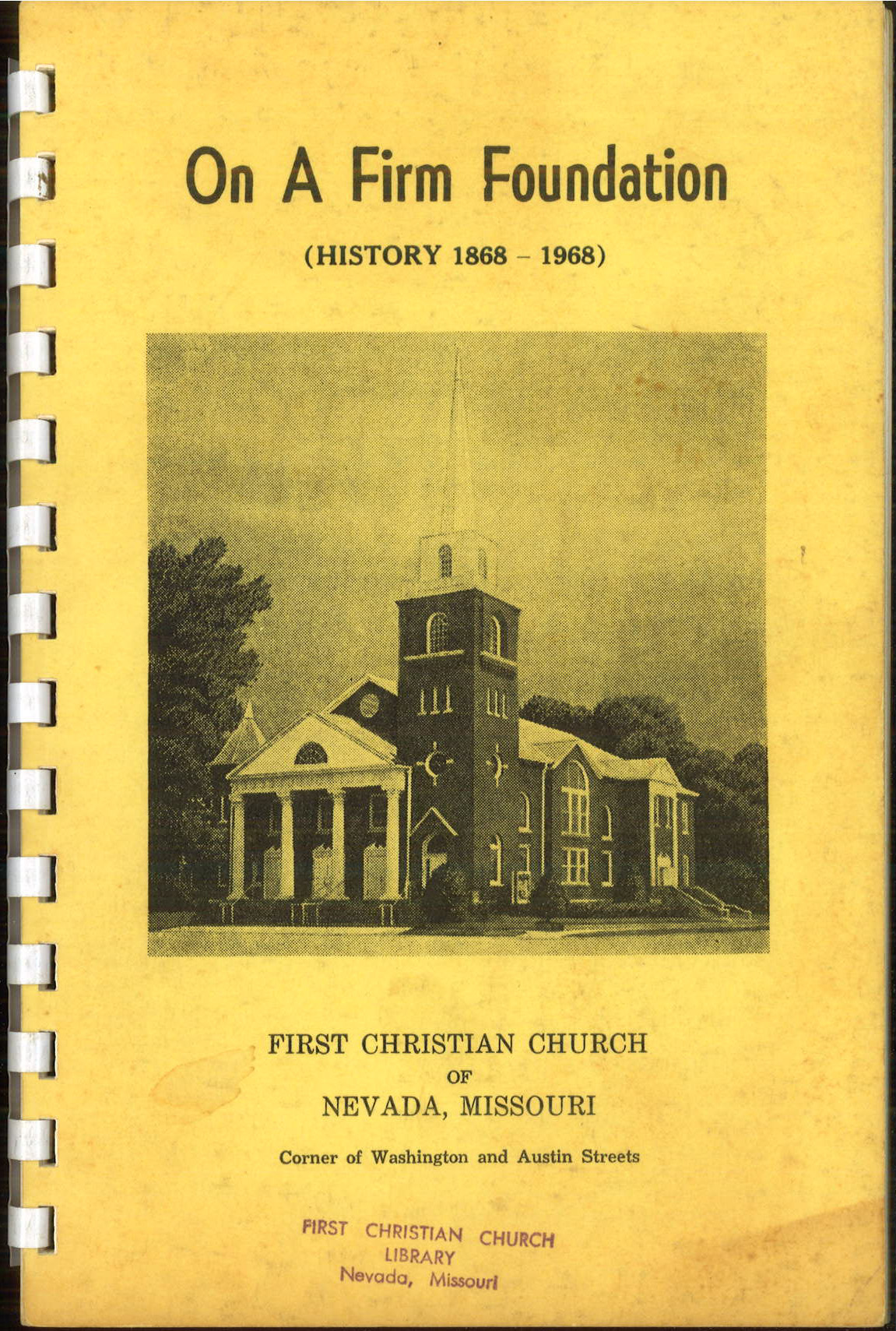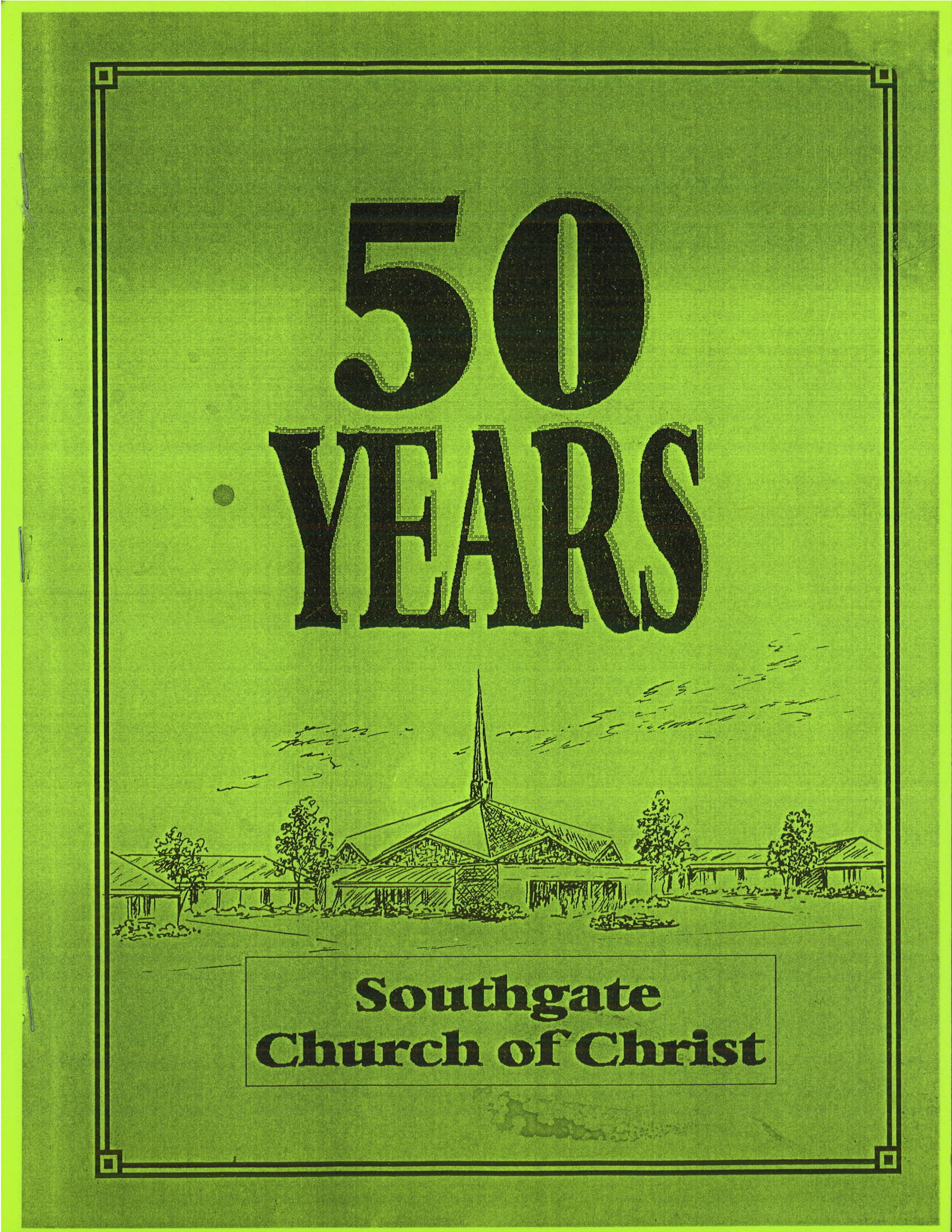In late summer we acquired a half-dozen single issues of Millennial Harbinger owned by and addressed to James Shannon. Three issues are from 1849, one from 1856, and two from 1857 and are in fine condition. In 1849 Shannon was President of Bacon College in Harrodsburg, Kentucky and from 1856-1859 he was President at Christian University in Canton, Missouri. Throughout these years he was an ardent defender of slavery and a frequent contributor to church papers such as Alexander Campbell’s Harbinger.
Each issue bears Shannon’s name at the top of the front cover. It is unlikely that Alexander Campbell was involved personally in the hand-addressing of each issue of the Harbinger. A print shop employee probably penned the names, then bundled issues for each post office, and sent them on their way. At their destination the postmaster split the bundle and distributed them accordingly. At year’s end subscribers often had their issues bound to make preservation and reference easier. Regrettably the covers were almost always stripped off in this process, thereby losing information such as news items, advertisements, or lists of agents who handled subscriptions for the paper.
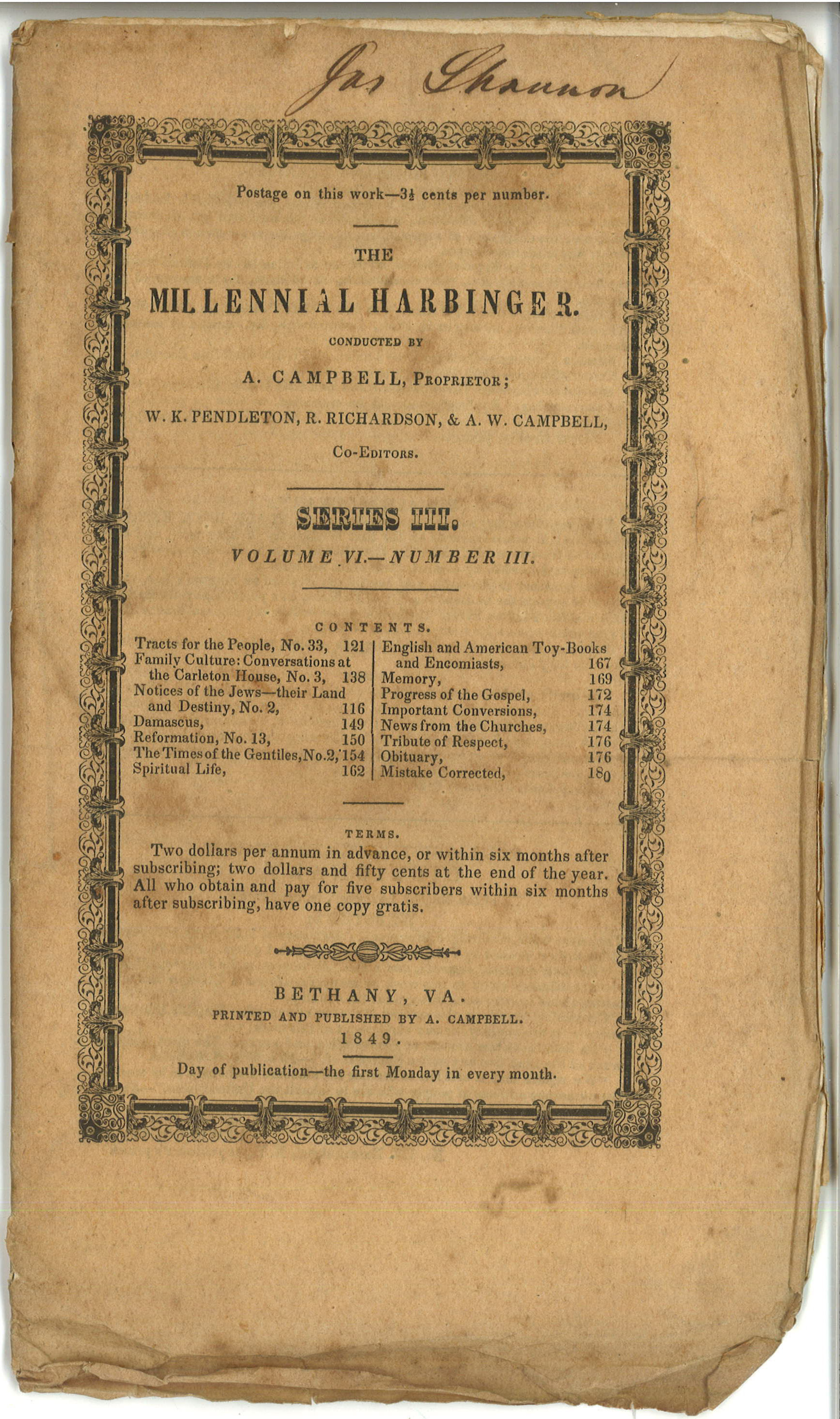
Front cover, Millennial Harbinger, March 1849, owned by James Shannon
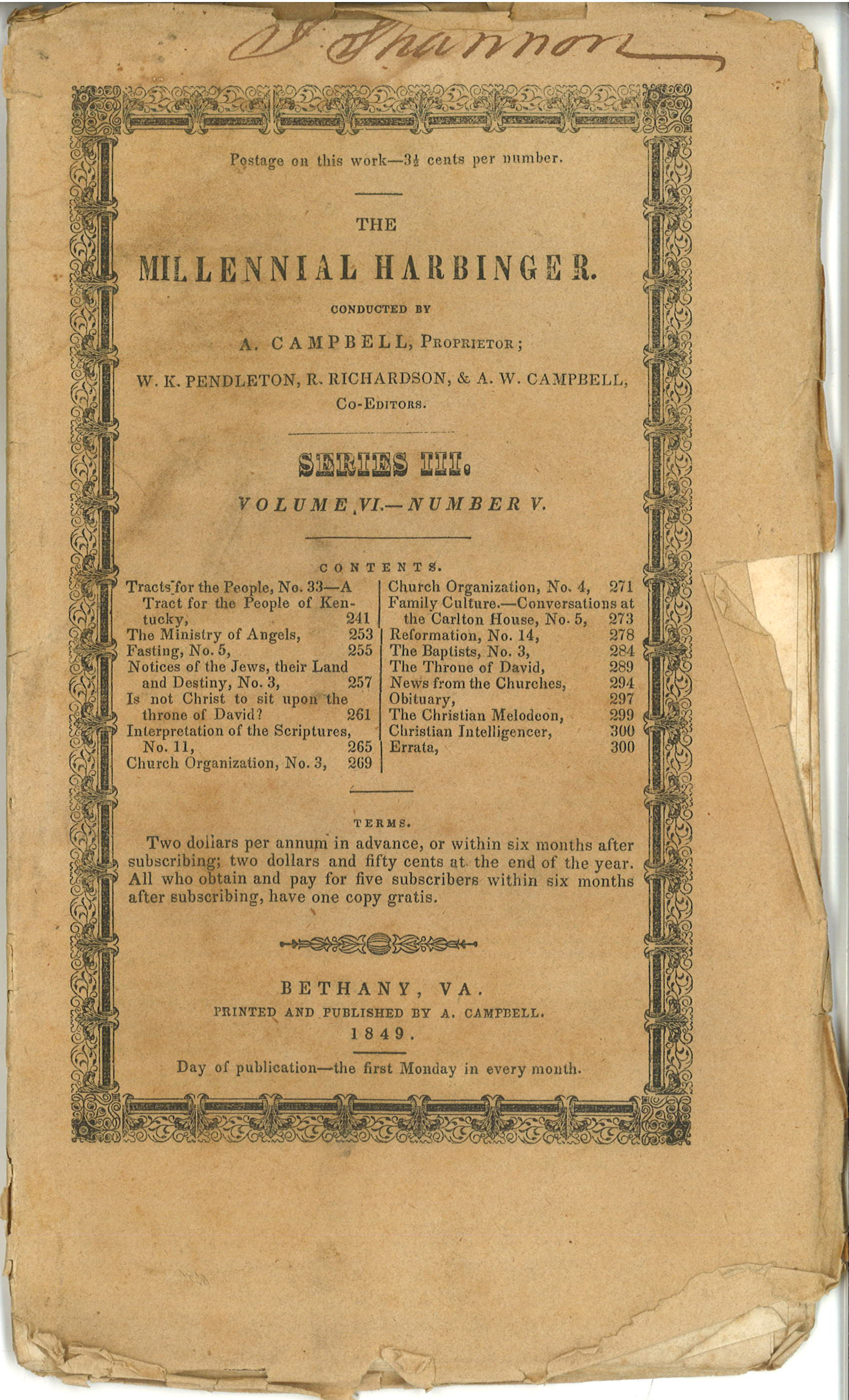
Front cover, Millennial Harbinger, May 1849, owned by James Shannon

Front cover, Millennial Harbinger, June 1849, owned by James Shannon
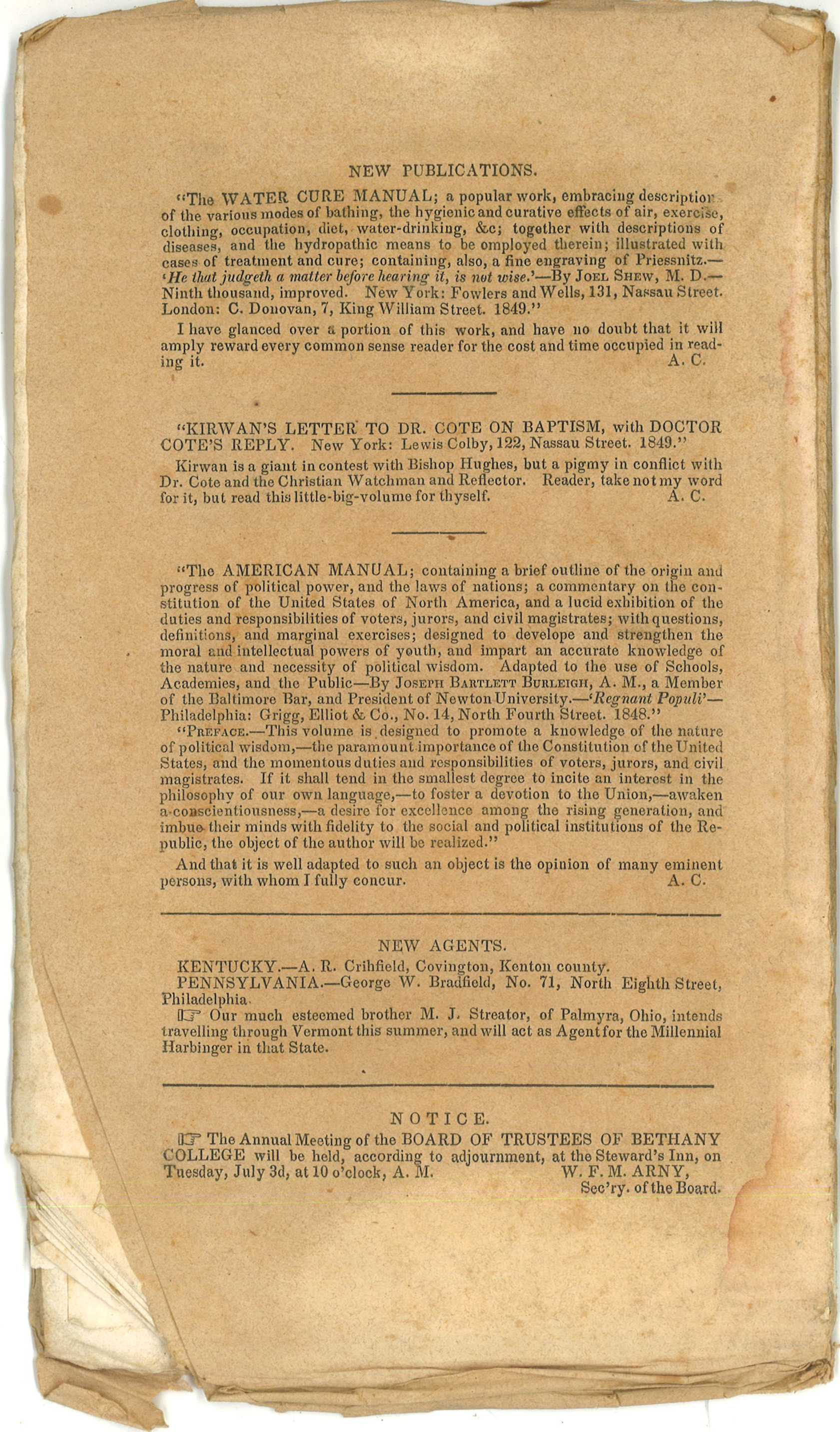
Back cover, Millennial Harbinger, June 1849, owned by James Shannon

Front cover, Millennial Harbinger, May 1857, owned by James Shannon
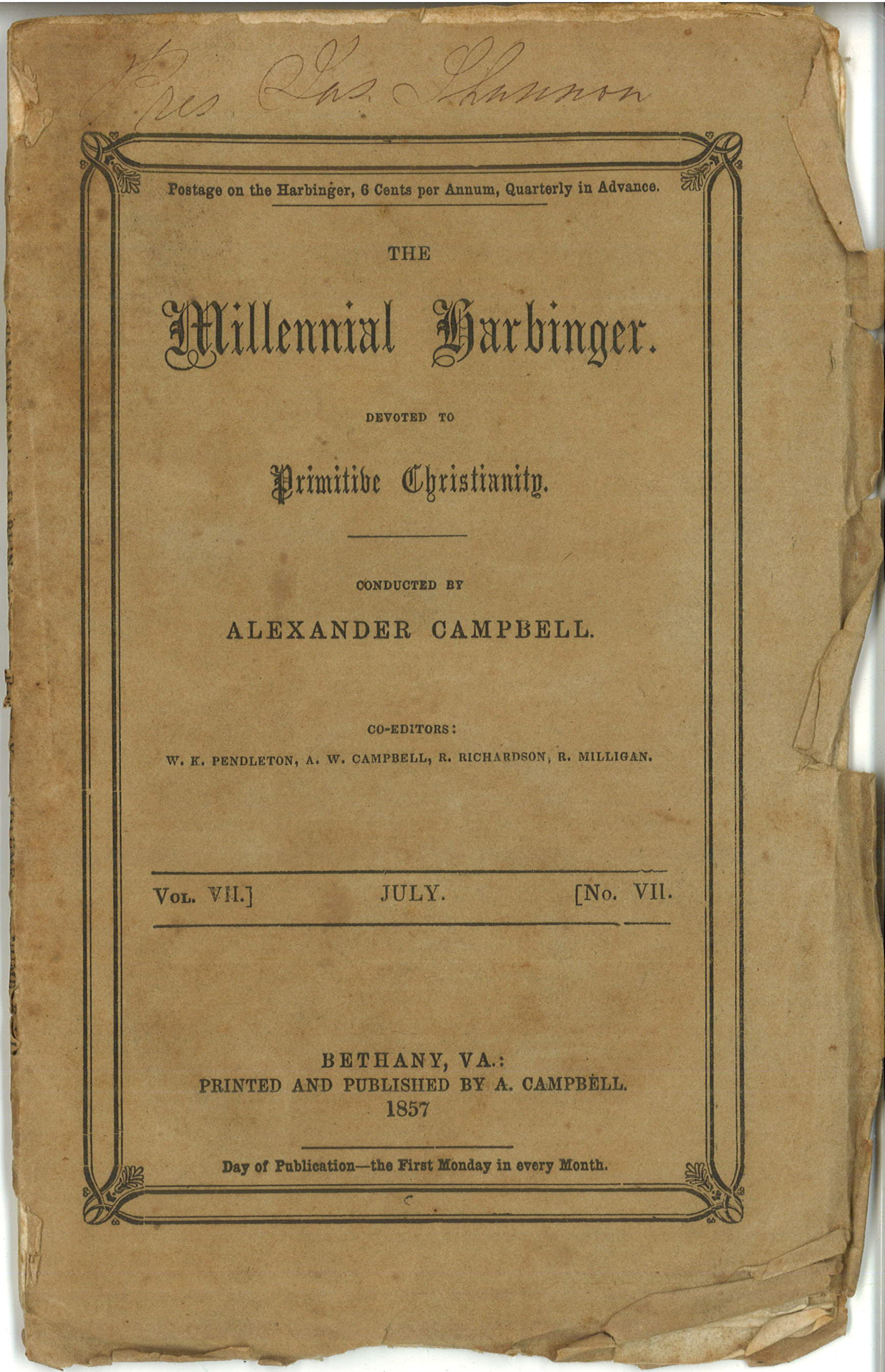
Front cover, Millennial Harbinger, July 1857, owned by James Shannon
In bookish terms, these issues are variations of ‘association copies.’ In this case, an association copy is a item owned by “someone of interest in his own right.”* For this reason, plus the fine condition of the original covers, I sought them for our collection. In historical terms, these items belonged to a truly significant figure in Stone-Campbell history. Historian David Edwin Harrell described him as
“the unchallenged leader among Disciples proslavery advocates…probably no other man in the first-generation history of the Disciples came as close to rivaling Alexander Campbell in education, intellectual capacity, and sheer force of personality as Shannon…[He} was also active as a preacher and was regarded by Campbell and many other Disciples leaders as the most brilliant speaker in the brotherhood.”**
How significant it will be to interpret these issues in a museum exhibit or in a class of students. They forcefully convey the ‘realness’ of the past and the positions Shannon advocated. The January 1856 issues carries an article describing a disturbance at Bethany College among the student body over slavery.
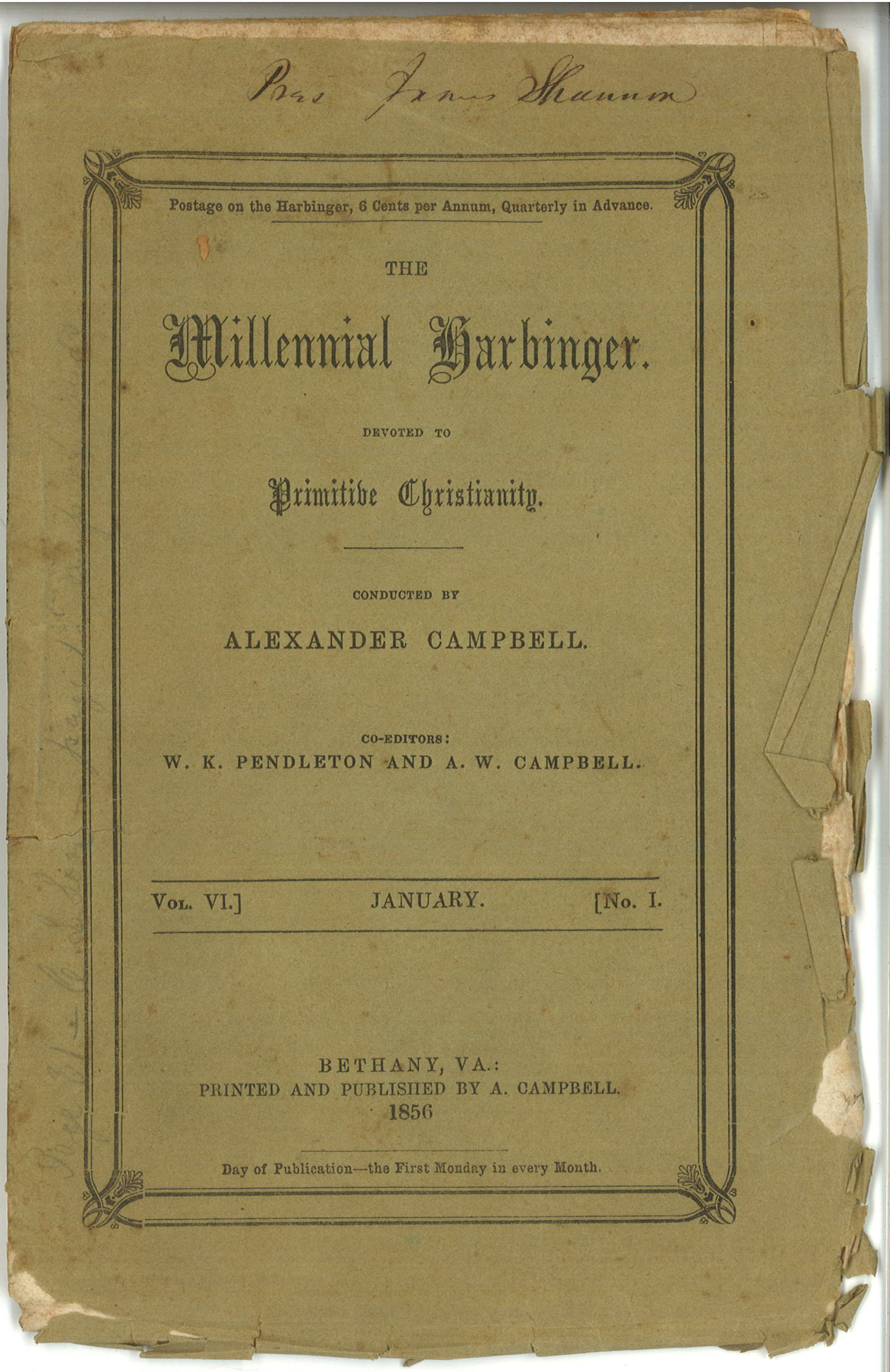
Front cover, Millennial Harbinger, January 1856, owned by James Shannon

Article about a disturbance at Bethany College over slavery, Millennial Harbinger, January 1856, owned by James Shannon
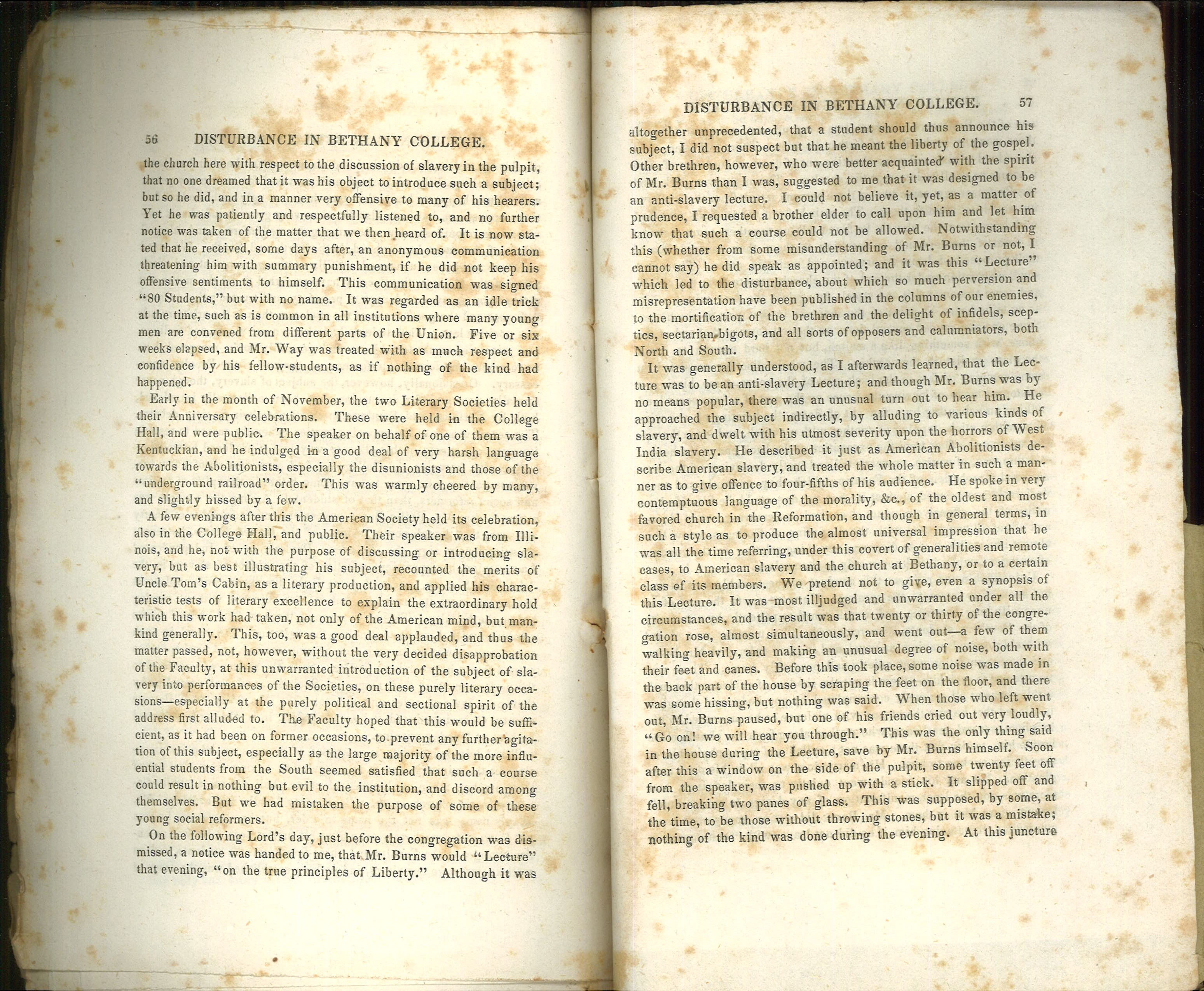
Article about a disturbance at Bethany College over slavery, Millennial Harbinger, January 1856, owned by James Shannon

Article about a disturbance at Bethany College over slavery, Millennial Harbinger, January 1856, owned by James Shannon
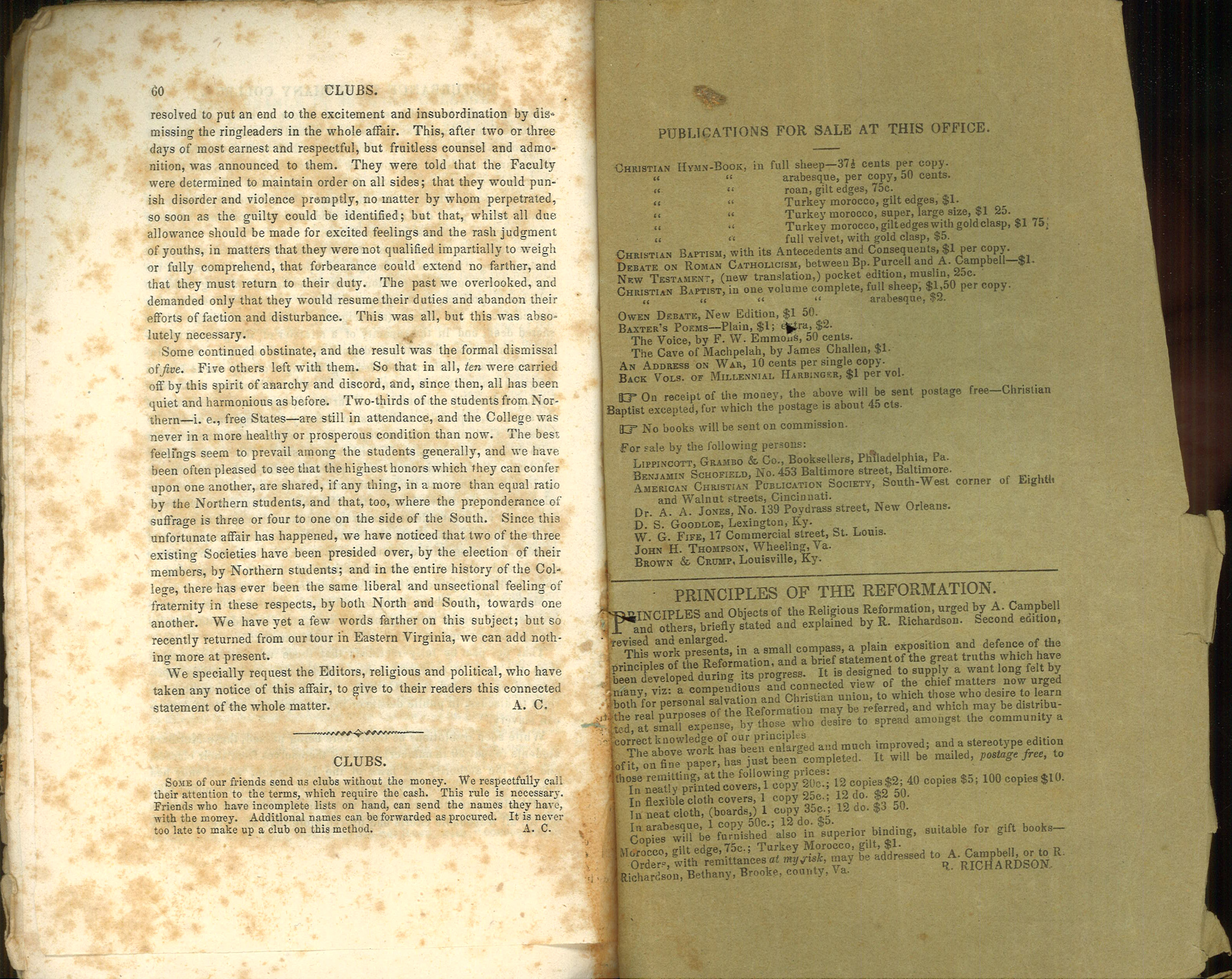
Article about a disturbance at Bethany College over slavery, Millennial Harbinger, January 1856, owned by James Shannon

Back cover, Millennial Harbinger, January 1856, owned by James Shannon
The January 1856 issue also bears a pencilled notation concerning the ordination of J. W. McGarvey. There is also a faint pencil notation on the front cover (see above) calling attention to an article in the issue by C. L. Loos. Presumably these notations are in Shannon’s hand.
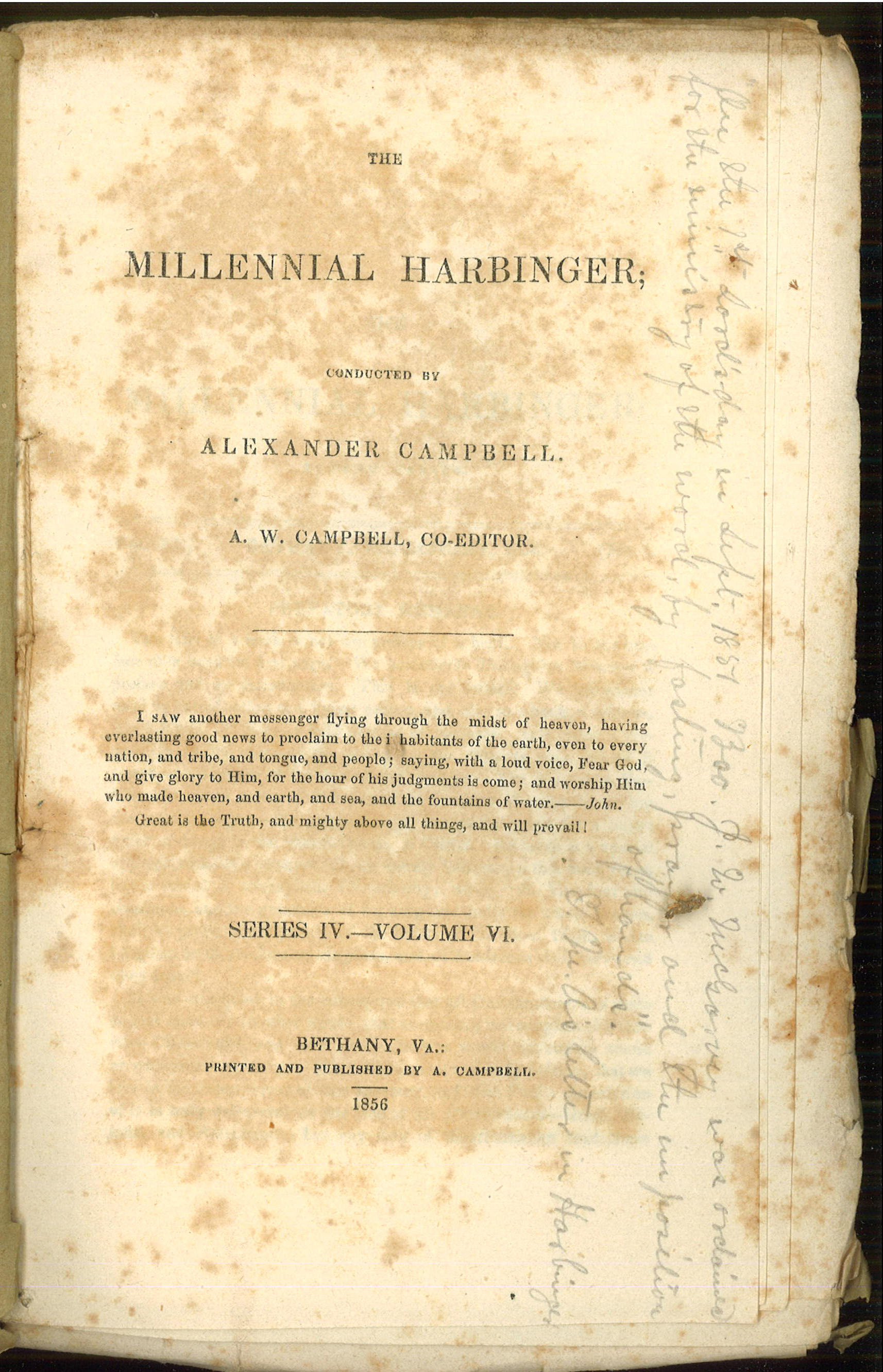
Title page, Millennial Harbinger, January 1856, owned by James Shannon. Notations very likely in Shannon’s hand.

Title page, Millennial Harbinger, January 1856, owned by James Shannon. Notations very likely in Shannon’s hand.
Our normal course of accessioning calls for single issues of periodicals to be foldered, boxed, and catalogued with other issues of the same journal. In this case I will accession them as a manuscript collection in Shannon’s name. What sets these issues apart is Shannon’s ownership and having them in a discrete manuscripts collection will ensure their preservation and visibility to our students and faculty, to the scholarly community, and to the church.
February 2020 update: see the finding aid for the James Shannon Papers, 1849-1857.
*John Carter, ABC for Book Collectors. New York: Knopf, 1991, 25.
**David Edwin Harrell, Jr. Quest for A Christian America: The Disciples of Christ and American Society to 1866. Nashville: DIsciples of Christ Historical Society, 1966, 122.



